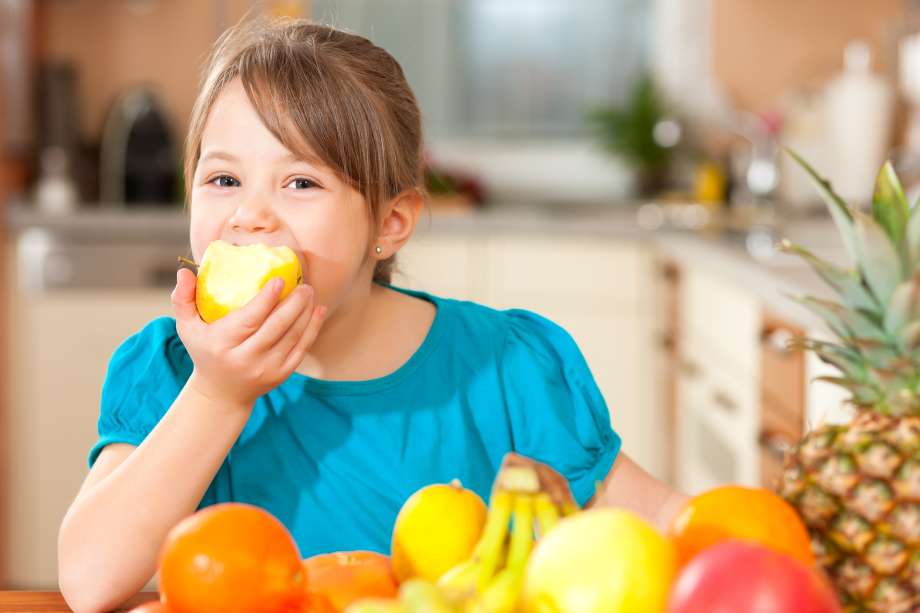Getting to Know Food

In this article, you will find:
Where food comes from
Getting to Know Food
The objects on the trees were apples, but how would Hayley have known? Until her first outing to a local farm, she thought apples came in a bag from the supermarket.Few of us grew up on a farm, but it seems like we know more about where food comes from than our children do, or will in the future. In this grab-and-go world, highly processed convenience foods are the norm for kids, who often don't have a clue about the origins of what they are eating.
Why should it matter that children know about food? Interested, informed children are more likely to learn to make a lifetime of wiser food choices, especially during adolescence when access to junk food is greater. And adults who eat better are healthier in the long run.
It doesn't take much to get preschoolers fired up about food. Here are some activities to spark their interest.
Grow it. Seeing a plant go from seedling to something edible provides a sense of accomplishment for kids. A garden, window box, or sunny spot in the house provides the opportunity to teach children about plants as food. Children enjoy choosing what to grow, planting the seeds, watching the plant's progress, and then eating the vegetables several weeks or months later. Older youngsters can be responsible for watering plants and can help Mom and Dad transfer them outside to a sunny spot in your yard or deck.
Hayley and Hannah like to monitor the progress of the plants in our small garden. Cherry tomato plants are a particular favorite. As the tomatoes grow, I point out how they go from green to red as they ripen. My children are not vegetable lovers, but they'll eat homegrown cherry tomatoes. Even though the tomatoes are sweet and juicy, I'm not sure taste is totally responsible for Hannah and Hayley's attraction. Accessibility has a lot to do with it. The girls are about the same size as the tomato plants, and they can reach right in and pick as many as they like. They love it when I ask them to gather tomatoes for our lunch or dinner. Even when they don't eat the tomatoes they have picked for the family, it doesn't matter. The act of caring for the plants and reaping the fruits of their labor helps nurture an appreciation for the fact that food can come from the ground.
Borrow it. When you don't have the space or the time for tending plants, perhaps you can "borrow" the benefits of a garden. For example, the kids love to pick raspberries in my mother's backyard. Only about half of the berries actually make it into the housethey eat the rest. The girls are nowhere near as interested in store/bought raspberries, however.
One of my mother's neighbors plants an enormous garden every year. Aside from raiding it several times a summer (with his permission, of course!), I often take my kids into his yard to check on the progress of the many different types of vegetables he plants there. I'm especially lucky that Bill allows my kids and me to plunder his blueberry bushes, since they are my all-time favorite fruit.
Bringing children to a farm to pick their own apples, pears, berries, or pumpkin is a great family activity. It gets everyone out of doors for fresh air and sunshine and physical activity. Since it's less likely that you will grow fruit than vegetables, picking your own is the way to go for showing kids where fruit originates.
Shop for it. You may not be able to garden or make it to a farm. No matter. Trips to the grocery store teach kids about food, too. Getting your children involved in your weekly shopping can go a long way toward interesting them in healthy eating.
Before you leave the house, take inventory and make a list. Kids love to help with these tasks. I tell Hayley what I need; she asks me how to spell it and then writes it down. I've done a week's worth of shopping based on her lists. Kids can also help you check the cupboards for what you need in the way of healthy staples such as bread, cereal, legumes, pasta, and canned tuna fish. Older children can help you clip coupons, too.
It's best to shop early in the day with children to avoid the crowds. Chances are, you'll be moving slowly as you stroll the aisles. I usually take the kids at 8 A.M. on a Saturday or Sunday morning. I never shop with them around lunch or dinnertime because it's too crowded in the store and they are usually too hungry or too tired to behave.
Once in the store, get a small shopping cart for your youngster to push, and have him fetch some items as you stroll the aisles together. Pointing out new foods will pique his interest: Let him feel the fuzzy outside of a kiwi, and talk to him about where kiwis come from. That could lead to a request to buy one and try it at home.
It's all well and good when kids clamor for fruits, vegetables, and whole grain cereals while in the supermarket. Kids will invariably request foods that are packed with sugar, salt, and fat, and you'll probably give in to their demands at times. That's OK, but don't let it happen too often. It can become a pattern that's hard to break. And never bribe them with food so that they will behave while you are shopping.